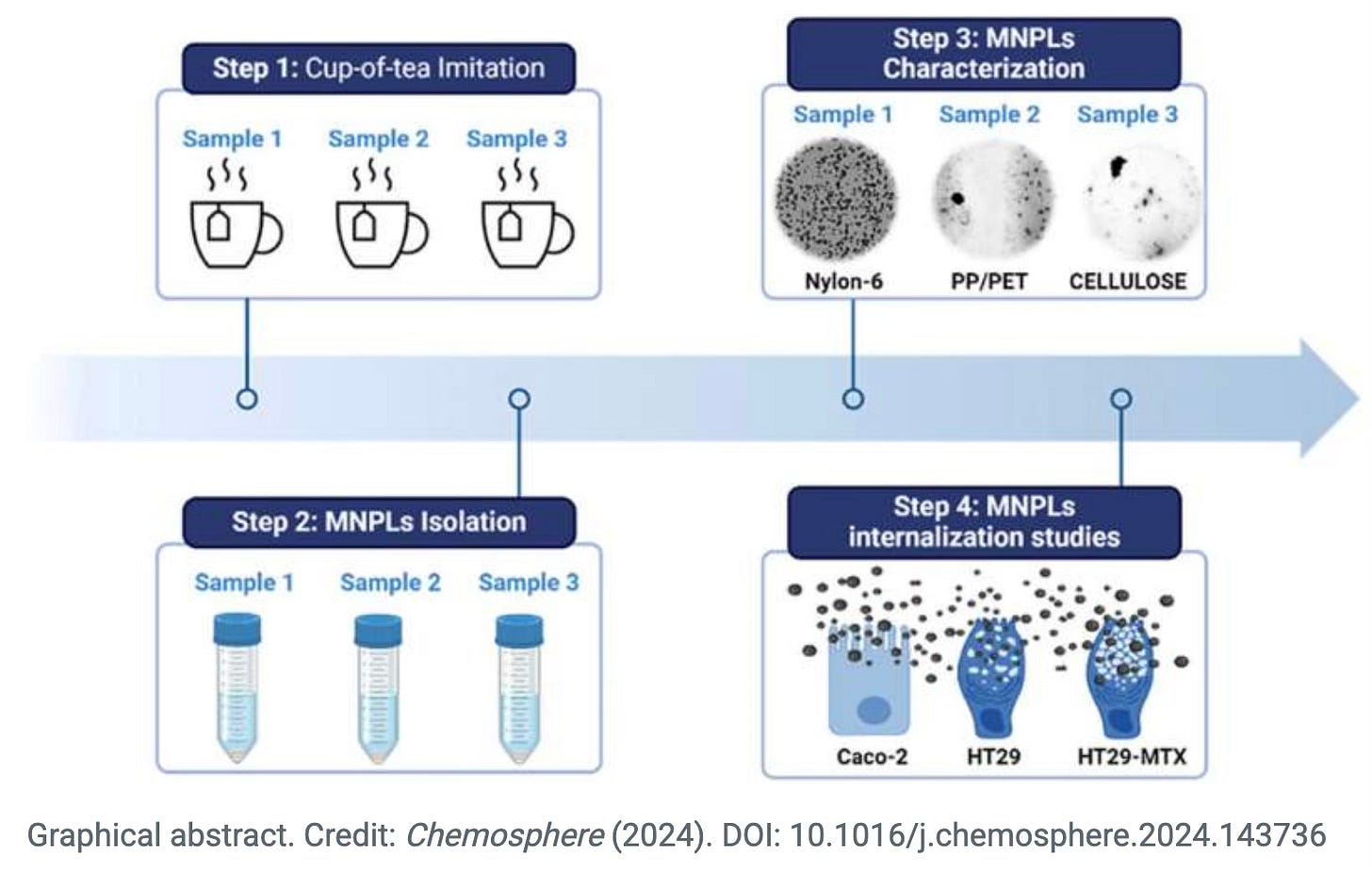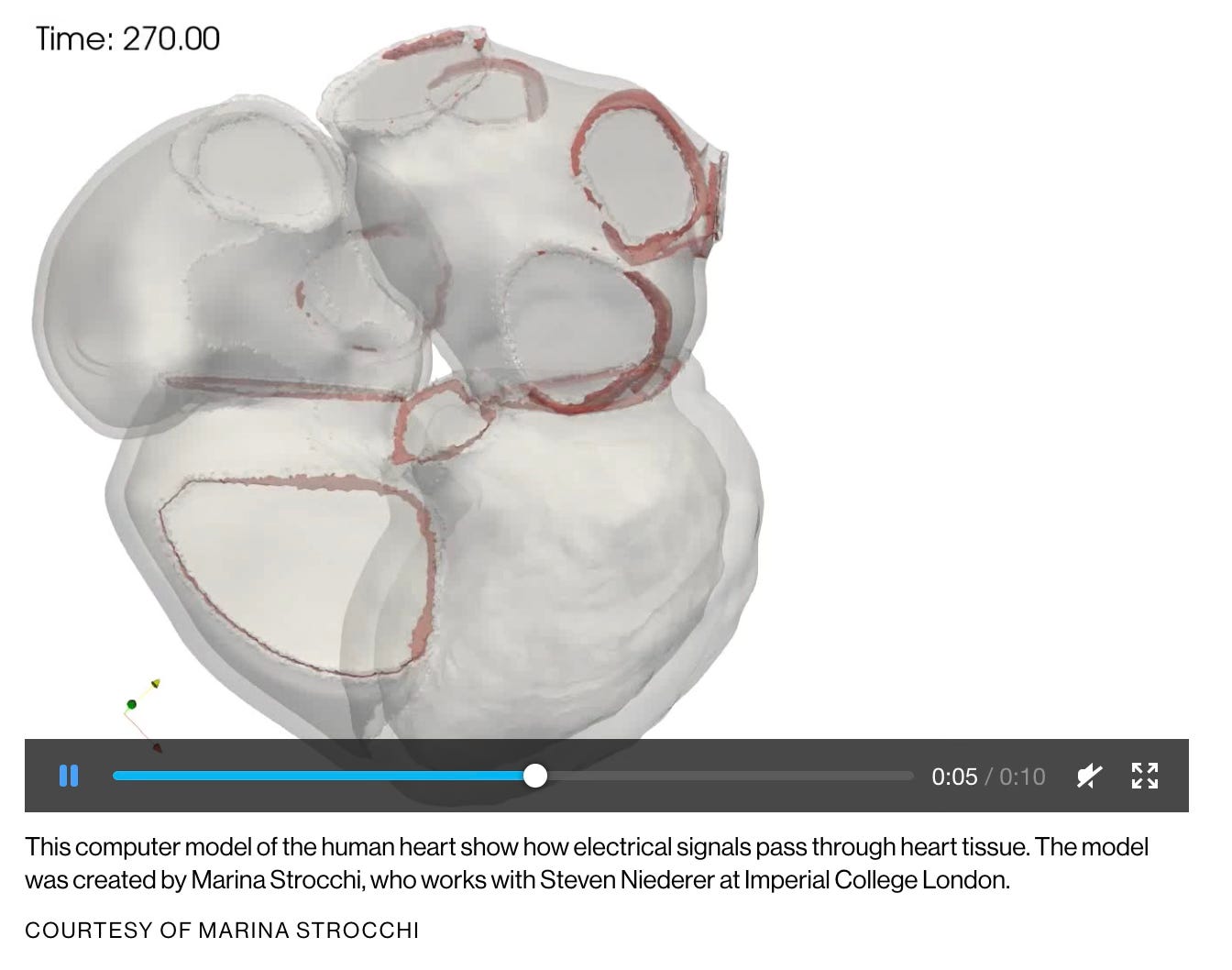This week we investigate the release of microplastics from the tea bags that many of us use to make a morning cup of tea. We discover a new form of Magnetism that will enable a faster, more robust and cheaper generation of data storage devices. We look at digital twins of patients hearts that are being developed to enable testing of surgical procedures virtually prior to operating. Finally we find a job for the generation of kids that have grown up playing video games.
Microplastics in Tea Bags
A team at Autonomous University of Barcelona has detailed how polymer based commercial tea bags release millions of nanoplastics and microplastics when infused. This is an important source of our exposure to nanoplastics.
The tea bags used in the study were made of polypropylene, nylon 6 and cellulose. Their study showed that when brewing tea, polypropylene releases 1.2 billion particles per milliliter, cellulose releases about 135 million particle per milliliter and nylon 6 8.18 million particles per milliliter.
The team then stained the particles and exposed them to different types of human intestinal cells to assess their interaction and possible cellular internalization. Mucus producing intestinal cells had the highest uptake of micro and nano plastics. The particles were able to enter the cell nucleus that houses the genetic material.
We have spoken before about the effects of chronic exposure to micro plastics on human health. The use of plastics in food packaging continues to increase. Something to think about the next time you are wandering the isles of your local supermarket. If I drank tea I would probably switch to loose leaf varieties.
A Third Form of Magnetism
A team from Nottingham University has crafted and taken images of a new magnetic substance known as an altermagnetic material. Initially conceived a few years ago it has taken almost no time at all to become realized. The team is able to tune these materials very precisely in order to create specific directions of magnetism.
The team has also confirmed the theory that altermagnetism could combine normal ferromagnetism and anti ferromagnetism. Standard magnetic materials work by exercising a force on nearby objects made of iron (i.e. ferro) or other qualifying elements. Anti ferromagnetism describes how magnets can act in a very mild way on materials that are not “ferrous”. The earth has a magnetic field due to its spining molten metal core that acts as an electromagnet.
In an alter magnet the direction of spin can vary on a grid that is formed by an ideal crystal. This is a material whose crystal patterns are perfect and not interrupted by faults, directional changes and other natural imperfections. Diamonds are ideal crystals, that is why they are clear.
The team used photoemission electron microscopy which was polarized to help reveal the magnetic influence, to map the entire grid structure of crystalline manganese telluride. This showed the underlying crystal structure. A grid of arrows indicates the direction of the magnetism at each point. The team was then able to manipulate the points of the magnetic spin.
These new altermagnetic materials may revolutionize spintronics. Spintronics is used in solid state drives in computers and phones where they make use of electron spin to store data. This work on altermagnetism may be able to increase the speeds of operation by up to one thousand times whilst being more energy efficient and robust. It may also reduce the dependance upon rare earth materials significantly.
Digital Twins of Human Organs
Digital replicas of our hearts are coming closer to reality. These digital twins are the same size and shape as our hearts but only exist virtually. Digital twins allow scientists to do virtual surgery in order to figure out the best course of action for a patients condition.
Digital twins have long been used in engineering to model machinery and infrastructure. A digital twin has three separate components. The first is the thing being modeled, an engine or a heart or whatever is being examined. The second component is a digital replica of that object which is created by taking measurements of the real thing. The third is new data that is fed into the model. Digital twins should be updated in real time. Information from wearable sensors and other real time sources are used where possible.
Potential outcomes can then be modeled to make predictions and feed them back to a patient’s health carer. Digital models can be used to test surgery outcomes prior to operations. How a patient might respond to a drug may also be investigated. Clearly the more accurate the model the better the prediction.
It is still early for this sort of technology. The most advanced medical digital twins are for human hearts. A heart is essentially a pump so it was familiar to engineers. Advances in imaging technology and computer processing power are enabling the researchers to mimic organ function with the level of fidelity that these types of applications require.
Engineers are now working on digital twins of brains, guts, livers, nervous systems and other organs. The eventual goal is to create digital versions of our bodies which will allow researchers and doctors to determine our risk of developing various diseases and determine which treatments might be best. This will allow our digital twin to test out medicines before we ingest them.
New Jobs for Video Game Players
Farms have typically been a place of heavy use of labor. That has been changing with new machinery and now automation. The average farmer in the US is 58 and few in the younger generations want to undertake backbreaking farm work. San Francisco based startup, Agtonomy is one of many companies seeking to automate farm work and open farming up to a new generation.
Partnering with John Deer, Agtonomy have developed AI based systems that will drive the autonomous revolution in agriculture. Agtonomy produces the software behind the systems. They have now turned to video game players to become part of the farm management process.
Autonomous systems don’t operate alone, they are also monitored and managed remotely. This is where the video game players come in. A farm in Sonoma County had 27 tractor driver positions open and had not had a single applicant for weeks. They updated the job description asking for “video game experience” and they were flooded with applicants.
The adoption of new types of technology appeals to a new generation of potential farmers. This suits the current generations skills and interests. A worker can push a button and have the whole fleet of farm equipment drive itself out to the fields to work. They remain in an air-conditioned truck overseeing the operations and intervening when required. I have no doubt that one day this will be done remotely from a beach resort somewhere. Farming won’t be the same as it used to be.
Paying it Forward
If you have a start-up or know of a start-up that has a product ready for market please let me know. I would be happy to have a look and feature the startup in this newsletter. Also if any startups need introductions please get in touch and I will help where I can.
If you have any questions or comments please comment below.
I would also appreciate it if you could forward this newsletter to anyone that you think might be interested or provide a recommendation on Substack.






